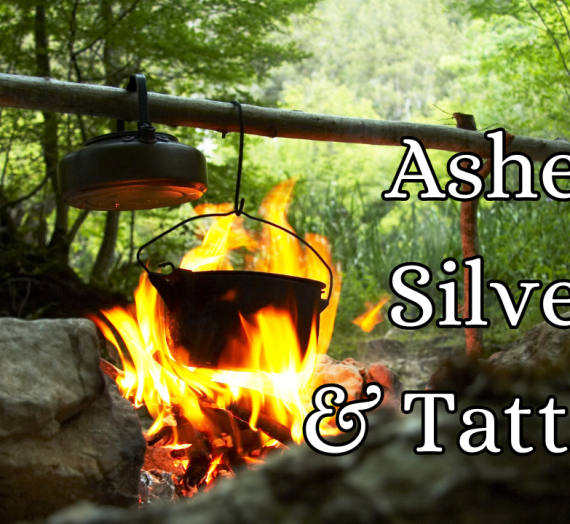What is sugaring, and how could your characters use it? What do ants and lice have to do with sugaring? What skill level is needed? How could the characters mess things up? Find out on this episode!
Sugaring, also known as sugaring wax, is an ancient type of waxing, or body hair removal, made from only three ingredients. It is said to be less painful than modern waxing and has been making a modern comeback. That means this can be written into stories from ancient Egypt to post-apocalyptic.
Sugaring originally started in Ancient Egypt. At this time, it was thought that the height of beauty for a woman was to be hairless. Not only that, but at the time, lice were a huge problem! One of the ways to deal with this was to be hairless. Lice or body lice are known to not only cause itching but can cause skin infections and spread disease.
Other beliefs at this time included the belief that being hairless was clean and sanitary. While it may or may not have been known at the time, a lack of body hair helps control body odor, which was important at the time as they did not have the same types of deodorant as we have today. They were, after all, living in a hot, dry climate.
Soon after, the Persians were also using sugaring by 1900 BC. From there, it spread to Greece, North Africa, East Africa, and Arabic nations. It did not spread to Europe until much later. Nor did it spread to the Americas until later, as most of the people moving here came from Europe. Today it is making a comeback as an eco-friendly alternative to waxing.
Sugaring is made from three ingredients: white sugar, water, and lemon. The recipe is one cup of sugar, 1/8 cup of water, and 1/8 cup of lemon juice. Sometimes apple cider vinegar is used to replace the lemon. These ingredients are mixed together in a pot.
Now this is where things seem to take a divide. Some recipes say to boil on high, while others say to boil on low. Some also say to constantly stir, while others say not to stir too often. You will know it is done when it is a golden brown color and has the consistency of hot syrup. One recipe even says it will smell like caramel. Another suggests using a candy thermometer to make sure it reaches 240 degrees Ferinhight. Be careful not to let it burn your character. I made this a long time ago, and I remember burning the sugar and myself several times before I got it right. It’s been over a decade, so I don’t remember the temperature or how often I stirred. I do know there can be a learning curve to making this without burning it.
After it is ready, carefully pour it into a warmed glass container. A warm glass container, because if it is cold and anything hot is poured into it, the glass will shatter. If your character plans to store any of it, make sure the glass is oiled first to keep it from sticking to the glass. Yes, that is a thing with some glass containers.
After it is in the glass, it needs time to cool down. Some people place it in ice water, while others let it cool in the open air. Both ways work. It will need at least 30 minutes either way but longer in the open air. When it is warm to the touch and doesn’t burn the hands or fingers, plus it can easily be manipulated with the hands without burning, it is ready to use.
Sugaring should be used while warm. If they’re unsure if it is too cool, simply have them try pushing their finger to the bottom of the jar. If it can’t get to the bottom, it is too cold and needs warming. In modern times, warming in the microwave for five to ten seconds at a time and testing it can work. In history or in an apocalypse, your character can sit the jar in hot water but don’t submerge it. It could also be warmed in a pot of boiling water like a baby’s bottle.
Before using, your character will need to prep their skin. The hair they want to remove should be no smaller than 1/4th inch and not longer than two inches. However, it is said that with hair over 1/2 inch it will be more painful to pull, and you will need more sugar than you would otherwise. If the hair is too long, it should be shaved down. No, I do not know how you shave down leg hair to fractions of an inch, unless you are talking about removing hair on your head. Then I assume you would use hair clippers with guides or scissors if there is no electricity.
Also, during the skin prep, your character will need to wash and exfoliate the legs or body part they are removing hair from. That’s a fancy way of saying remove dead skin cells, likely with scrubbing. Make sure to remove all perfumes and oils. Last, make sure to dry the area well. Sugaring has a hard time sticking to the skin if there is moisture, such as water or sweat. If needed, a light dusting of arrowroot or corn starch could be used to help get rid of the unwanted moisture on the skin.
An important note is that it should not be used on sunburned skin, rashes, bruises, swollen areas, cuts, or other wounds. People with autoimmune disorders or people going through chemo should ask a doctor what is safest for them.
To start sugaring, your character will scoop up a good-sized amount with only their fingertips, likely less than the size of an egg. Then they will place the sugaring on the skin, moving it in the opposite direction to the hair growth. If the hair grows down, they will drag it up. Press while moving until there is no more sugaring. It should make a strip of sugaring as wide as their fingers and about six or so inches long. Then the character will smooth back over the sugaring to press it into the skin three to six more times. This is to make sure as many hairs stick as possible.
If your character is using cloth strips, they will place the cloth over it now and also press the cloth in three or more times. Next, they will pull the skin taunt at the end of where they just made the sugaring streak. Then they will rip the cloth off in one smooth, quick motion, pulling in the same direction as the hair. Yes, this is the opposite of waxing. That is because waxing breaks the hair follicles off while sugaring pulls them out, root and all.
If they are not using cloth, they will also pull the skin taunt, and with their fingers still in the sugaring, they will make a quick flicking motion to rip the hair out. It only takes up about half of the sugaring per flick. So two or three flicks will be needed to remove all of it. If there is pain, simply place the hand over the area, and apply pressure for 10 to 30 seconds. The sugaring can be reused until it no longer sticks, and then a new scoop is used. Repeat these steps until all the hair is gone. Sugaring is done every two to three weeks, depending on the individual’s hair growth. The cloth strips can be reused. Hot water will remove the sugaring, and then the strips can be washed.
There are some pros and cons of sugaring.
Pros:
* Less painful than waxing
* It lasts two to three weeks before needing to do it again
* Hair can grow back finer or lighter in color
* It is cheap to make
* It is better for sensitive skin
* Can cause slower regrowth
* The redness vanishes after two or three minutes
* The paste doesn’t stick to the skin
* Easy to clean up
* 100% natural ingredients with no chemicals
* No applicators are needed
* Cloth strips are reusable.
Cons:
* It has a learning curve to it
* Ingrown hairs can happen
* If your character has very fine hair, it might not catch or hold the hair like it is supposed to, causing missed hairs
* Your character risks burning themselves. Not only that, but sugaring is sticky, and it will not come off quickly
* While less painful than waxing, it is still painful
* It can leave stray hairs behind
* Can attract ants if left where they can find it or without a lid
* Sugaring is time-consuming
Fun fact: It is believed Cleopatra used sugaring and helped with the spread of its use.
What could possibly go wrong:
Likely to go wrong: Your character makes the sugaring and doesn’t stir often enough, causing the sugaring to burn.
Likely to go wrong: Your character doesn’t cook the sugaring long enough, leaving it runny and sticky.
Possible to go wrong: Your character finds the sugaring extremely painful. They could decide to never do it again.
Possible to go wrong: Your character pours the sugaring into a glass jar that was not heated. This makes the glass shatter.
Unlikely to go wrong: Your character touches the sugaring before it is cooled and severely burns themselves.
Unlikely to go wrong: Your character decides to shape their eyebrows with sugaring and takes their whole eyebrow off on accident.
Improbable but technically still in the realm of possibilities: Your character gets an ant infestation after forgetting to put a lid on the sugaring.
Improbable but technically still in the realm of possibilities: Your character pours the sugaring into a glass jar that was not heated. When the glass shatters, it cuts your character.
Helpful Links to learn more:
Sugaring:
https://www.healthline.com/health/beauty-skin-care/what-is-sugaring#during-the-appointment
https://health.clevelandclinic.org/what-is-sugaring/
How to make sugaring:
https://www.byrdie.com/how-to-make-your-own-homemade-sugar-wax-347142
https://nakedtruthbeauty.com/blog/diy-sugaring-wax-really-works
Video Tutorial:
Video of Arabic sugaring:
History of sugaring:
https://www.puresugarhb.com/blog/2016/1/26/the-history-of-sugaring



